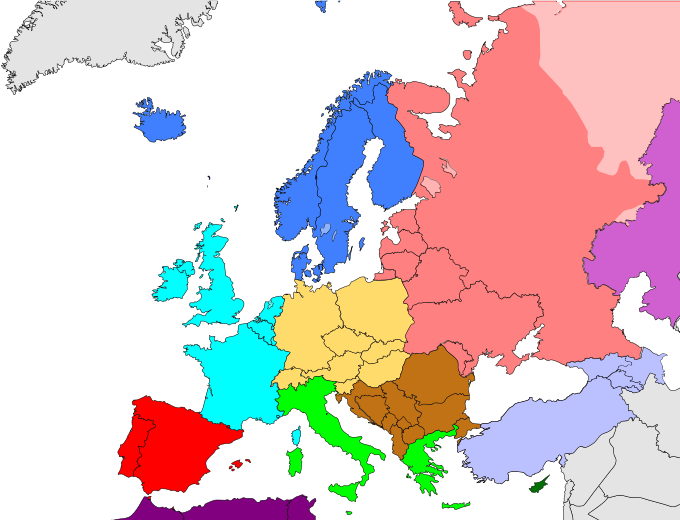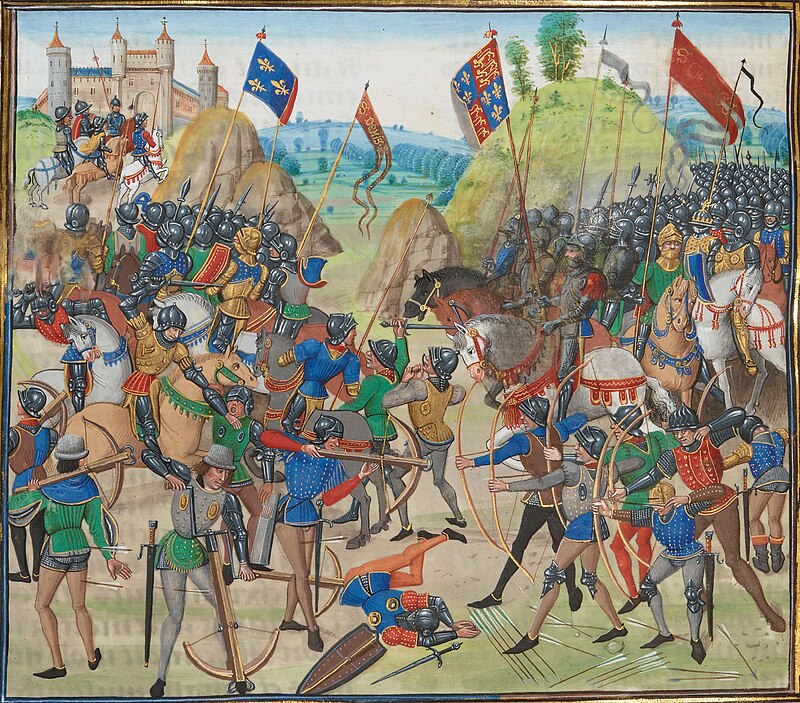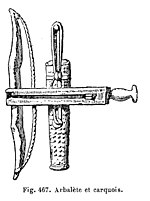One thing you can tell from your picture is that the prods are clearly wood or composite, they are too fat to be steel. Now, since it is a picture of Crecy, that would be historically accurate for the time of the battle. But if the crossbows were just the crossbows being used in the time of the artist, late 15th century, that suggest that steel crossbows were not necessarily the majority even in the late 15th century. William Ross late 15th century purchases do not specifically state they were steel, and the reference to wood could have been to contrast them to composite crossbows, rather than steel
Normally, artist back then showed the weapons and armour for their own time, rather than the time of the battle, but the artist could have known wood/composite crossbows were more historical. Or he use contemporary wood/composite hunting crossbows as his models, rather than actual war crossbows. The prods also seem smaller than those depicted in the other illustrations, and since there is no windlass in the picture, they might just been foot drawn. While we have a lot of goat's foot levers around, attesting to their popularity in medieval times, I don't recall seeing them in any medieval combat illustration, far less than the depictions with windlass being used. The most popular method shown in medieval battle illustrations seems either using a foot (with perhaps a belt assist) or using windlass, with a cranequin mostly shown used by cavalry crossbowmen.
If composite crossbows, as Bilchers work showed, the windlass drawn crossbows would have far more powerful than any of Tod's crossbows, and even if steel, they would have been more powerful. No intelligent person would have made a crossbow by a windlass with a larger prod, if the could have made a smaller crossbow with the same power. As I said, "some", (I did not say all) of the battle scene windlass crossbows had prods significantly bigger than Tod's 1250 lbs crossbow with a 25" prod, you only have to look at Tod's video and compare his prod with some of the ones shown in battle illustructions, and see it is smaller.
PS - In the 14th century, most crossbows would not be using windlasses, in fact most would not be. The Genoese, reputed to have among the best crossbows and be the best crossbowmans, could have had windlass drawn ones, and if anyone did, they would be the most likely. Windlass were around, they did exist, so it was possible. As I said at the beginning of the thread, if the Genoese had windlass crossbows, they could of matched or out ranged the longbowmen at Crecy, without windlass crossbows, wet strings were just an excuse.
One thing you can tell from your picture is that the prods are clearly wood or composite, they are too fat to be steel. Now, since it is a picture of Crecy, that would be historically accurate for the time of the battle. But if the crossbows were just the crossbows being used in the time of the artist, late 15th century, that suggest that steel crossbows were not necessarily the majority even in the late 15th century. William Ross late 15th century purchases do not specifically state they were steel, and the reference to wood could have been to contrast them to composite crossbows, rather than steel
Normally, artist back then showed the weapons and armour for their own time, rather than the time of the battle, but the artist could have known wood/composite crossbows were more historical. Or he use contemporary wood/composite hunting crossbows as his models, rather than actual war crossbows. The prods also seem smaller than those depicted in the other illustrations, and since there is no windlass in the picture, they might just been foot drawn. While we have a lot of goat's foot levers around, attesting to their popularity in medieval times, I don't recall seeing them in any medieval combat illustration, far less than the depictions with windlass being used. The most popular method shown in medieval battle illustrations seems either using a foot (with perhaps a belt assist) or using windlass, with a cranequin mostly shown used by cavalry crossbowmen.








 Reply With Quote
Reply With Quote

















